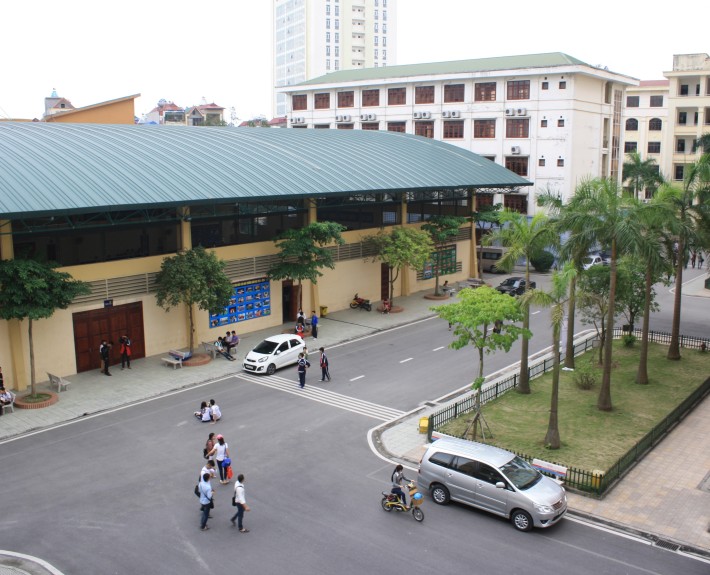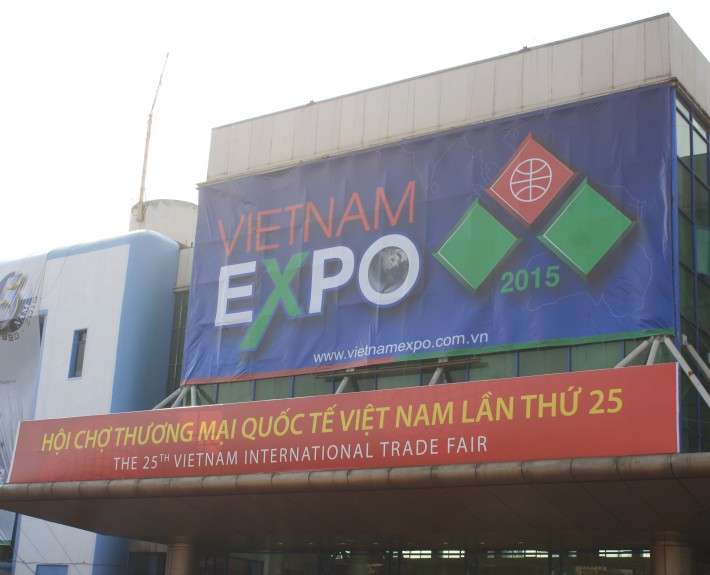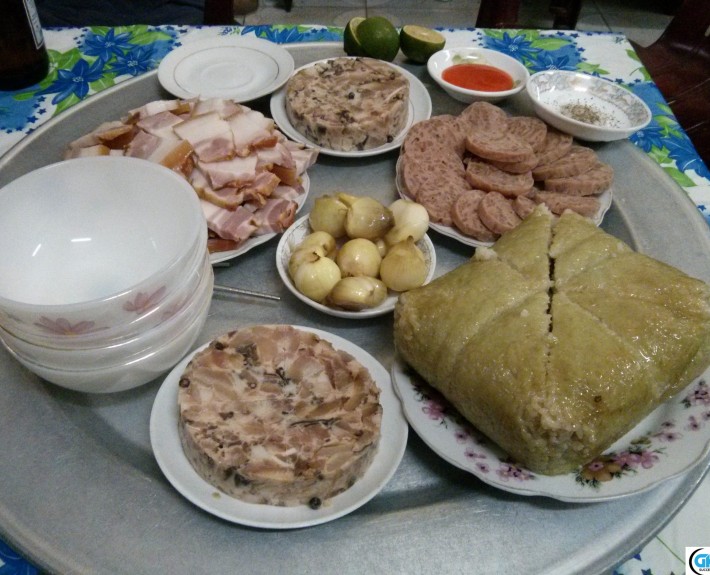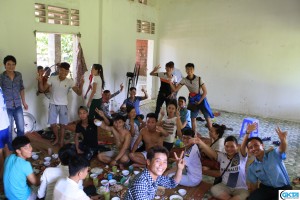Samsung’s Vision in Vietnam
On April 22, several Vietnamese leaders of Samsung as well as former Vietnamese and South Korean ambassadors came together during a workshop at Hanoi’s University of Industry to share elements of success, future opportunities, and advice from their own careers with approximately 300 students.
The guests of honor included Mr. Han Myoung Sup: President, Samsung Complex Vietnam; Mr. Ha Chan Ho: Strategic Advisor, Samsung Vietnam and Former South Korean Ambassador to Vietnam; Mr. Lee Cheol Ku, Vice President of Human Resources, Samsung Vietnam; and Mr. Phạm Tiến Vân, Former Vietnamese Ambassador to South Korea. The theme of the workshop was “Building Vision” which communicated three basic tenets to the university students:
- Work Hard
- Ask “Why”
- Attitude is Everything
These three points were emphasized at different times during the workshop but the guest speakers also implored the students to think and dream big and to travel outside of Vietnam. In particular, Mr. Han Myoung Sup told the audience that Vietnam is an important part of the global economy. Later, Mr. Phạm Tiến Vân reminded the students that even though resources are limited, creation (and innovation) has no limit so they should try to make a difference, i.e., become “Creation Heroes.” He pointed out that South Korea went from a war-torn economy to becoming a developed nation and economic powerhouse within several decades–and that Vietnam should follow a similar path. (During the 1960s South Korea was considered among the poorest countries in the world.) Indeed, Samsung’s $11 billion investment in high technology (and in human capital) in Vietnam will be one of the keys to developing the country further in the future.
Samsung and Vietnam
Apart from other Samsung affiliates’ investment capital, currently, Samsung Electronics’ investments in Vietnam include:
- $2.5 billion in factories in the northern province of Bac Ninh (producing cellphones, smartphones, tablets, and vacuum cleaners);
- $5 billion in a hi-tech assembly plant in the northern province of Thai Nguyen (in Yen Binh Industrial Park); and
- ~$1.4 billion in plant in Ho Chi Minh City.
Furthermore, Samsung Vietnam’s research center is located in Hanoi, making Vietnam an essential part of Samsung’s global supply chain. But Samsung is also an integral part of Vietnam’s economy as its largest foreign investor; last year, Samsung products made up 18% of Vietnam’s total export turnover.
Investing in Vietnam is appealing for Samsung because its new manufacturing facilities benefit from corporate tax breaks for the first four years of operations, and then half the normal rate for the following nine years, depending on meeting certain criteria. These tax breaks plus the lower cost of labor in Vietnam (compared to China, where Samsung is shifting its manufacturing from) will allow Samsung to remain competitive against rivals such as Apple and Xiaomi. But it also means that Samsung will have to keep its Vietnamese production facilities adequately staffed (in part by events like the “Building Vision” workshop) in order to meet the global demand of its products. Today, about one out of three Samsung phones are made in Vietnam.
Working at Samsung
Samsung branded magazines were distributed to the students, which featured facts about operations, profiles of current employees (including salary information), and other relevant information that might be of interest to students and future Samsung employees, allowing for an in-depth summary of what the work culture is like.
During the Q&A portion, a student asked for advice for interviewing with Samsung. Samsung Vietnam Vice President Lee Cheol Ku had the following advice for the student:
- Introduce yourself in English or Korean;
- Promote your strengths and touch upon your weak points; and
- Make the case for why Samsung should hire you.
Once hired, a good attitude, positive thinking, and confidence will surely accelerate any career, but especially so at Samsung (according to representatives). (And if a candidate is not found competitive, the speakers advised to try and apply again.) Samsung representatives said that the company considers each worker to be a “genius” and provides a fair playing field for advancement if an employee does a good job. It advertised a realistically attainable monthly wage for “fresh staff” (university hires) of 9.7 million VND (approximately $450—the monthly minimum wage in Vietnam is approximately $150) at the workshop and stated that it needs high-quality people who work hard and can be promoted quickly (thereby earning the higher stated wages).
By the end of next month, Samsung is looking to fill 2,000 student positions. Already, 18,000 candidates have applied (with 1,600 applicants from the University of Industry).
Constructive Vision
Economies like South Korea’s provide a road map for how a developing country can turn itself into a global leader (the other notable example being Japan). Sony, LG, Toyota, Hyundai, and Samsung are all prime examples of innovative companies that emerged as a result of necessary investments in high technology, complementary skills, and long term choices. (And, by the way, Intel, Microsoft, and LG have all collectively invested several billions of dollars in Vietnam as well.)
In general, Vietnamese workers are quick learners when properly incentivized and they are natural entrepreneurs. Companies like Samsung are leading the way to positively impact the human resources standards in Vietnam as well as to position themselves for optimal competitive advantages. However, in the not-too-distant future, attempts at a Vietnamese “Samsung,” or a Vietnamese “Xiaomi,” or a Vietnamese “Nintendo” may emerge to challenge these established players. Vietnam is already amassing vast amounts of IT outsourcing knowledge as it continues to build its low-tech manufacturing capabilities–and now multi-nationals are training its workforce on how to assemble hi-tech components. For some Vietnamese, it may only be a matter of time before the opportunity cost to start their own company becomes too great.
In the meantime, the advice given at the workshop isn’t just suitable for students—it’s apt for anyone in business (and would be good to record and share on YouTube with other students throughout Vietnam). Trade barriers continue to fall as competition increases around the world, especially in Southeast Asia. At the end of this year ASEAN integration begins, which will bring with it zero percent tariffs for most products throughout the region by 2018. No one can say for sure what the landscape will be like then–but the best way to predict the future is by creating it. Without a doubt, Samsung will continue to play a critical role in the Vietnamese ecosystem for years to come as it continues to invest billions into the rapidly-developing country.

















































































